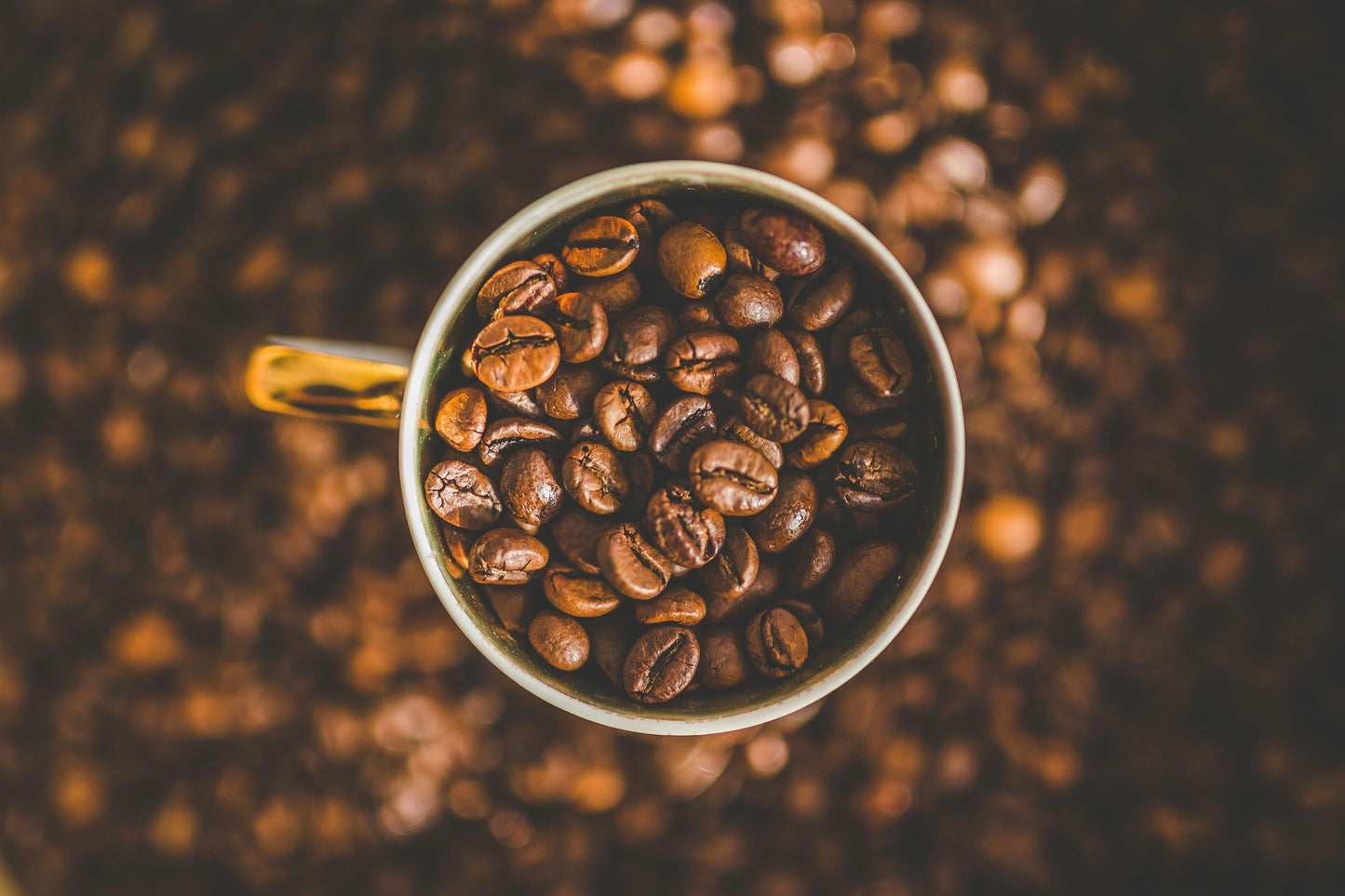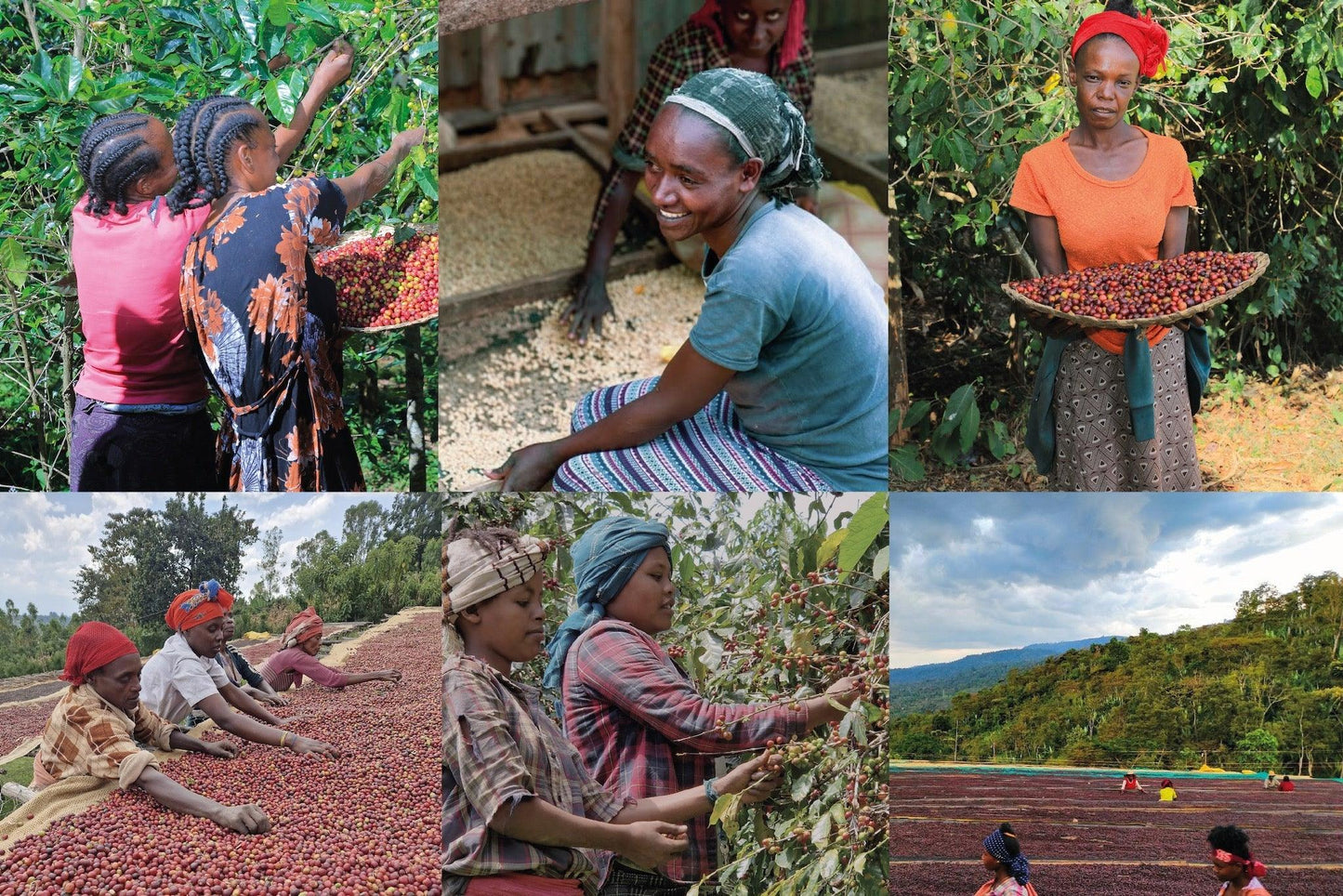
Den ultimative guide til kaffekværnestørrelser: Sådan vælger du den rigtige maling til din brygningsmetode
Har du nogensinde brygget en kop kaffe og fundet ud af, at den mangler smag på trods af at du har brugt bønner af høj kvalitet? Det er sandsynligt, at årsagen til det er din kaffekværnstørrelse. Maling af dine kaffebønner er et afgørende trin i brygningsprocessen, da det bestemmer ekstraktionshastigheden, som påvirker smagen og styrken af din kaffe. Brug af den forkerte malestørrelse kan resultere i overekstraheret eller underekstraheret kaffe, hvilket fører til en bitter eller svag kop.
Derfor er det vigtigt at kende den rigtige malestørrelse til din foretrukne brygningsmetode , fordi konsistensen af din kaffegrums kan gøre hele verden forskel.
Før du dykker ned i størrelsesguiden for kaffekværn, er det dog vigtigt at forstå det grundlæggende i de faktorer, der bidrager til under- eller overekstraktion.
Almindelige årsager til underudvinding i kaffebrygning
- Brug af en grovkværnet størrelse til et espressoshot kan resultere i underudvinding. Vandet passerer for hurtigt gennem kaffen, hvilket giver et svagt og syrligt espressoshot.
- Brygning af kaffe med vand, der er for koldt, kan også føre til underudsugning. Vandtemperaturen er afgørende i brygningsprocessen, og hvis den er for lav, vil vandet ikke udvinde nok af kaffens opløselige forbindelser, hvilket fører til en svag kop.
- Brug af for lidt kaffegrums kan også resultere i underudsugning. Uden nok kaffegrums vil vandet ikke have nok overfladeareal til at udvinde de ønskede smage og aromaer fra kaffen, hvilket resulterer i en svag og underudtrukket kop.
- Brygning af kaffe i for kort tid kan også føre til underudvinding. Den optimale bryggetid afhænger af bryggemetoden og kaffe-til-vand-forholdet, men hvis bryggetiden er for kort, vil vandet ikke have nok kontakttid med kaffegrumset til at udvinde nok af de ønskede forbindelser, hvilket resulterer i en svag og surt smagende kop.
Som vi allerede har nævnt, kan kaffekværnets størrelse i væsentlig grad påvirke ekstraktionsudbyttet og smagen af kaffen. Bare for at opsummere, så opstår underekstraktion, når malestørrelsen er for grov, og vandet ikke kan trække nok af de opløselige forbindelser fra kaffegrumset. Dette kan resultere i en svag og surt smagende kaffe med en lav fylde og aroma. Dette skyldes, at vandet ikke har nok kontakttid med kaffegrumset til at udvinde de ønskede smags- og aromastoffer.
Almindelige årsager til overudvinding i kaffebrygning
På den anden side, når formalingsstørrelsen er for fin, kan vandet kæmpe for at passere gennem det komprimerede kaffegrums, hvilket fører til overekstraktion og en bittersmagende kaffe. Her er de vigtigste faktorer for overekstraktion.
- Brug af en finmalet størrelse til en fransk presse kan føre til overudvinding. De fine kaffepartikler kan sive gennem mesh-filteret, hvilket resulterer i en grynet og bittert smagende kop.
- Hvis du lader kaffen trække for længe i en dryp kaffemaskine, kan det også resultere i overudvinding. Vandet vil ekstrahere for meget af kaffens opløselige forbindelser, hvilket resulterer i en bitter og astringerende kop.
- Brug af for meget kaffegrums kan også føre til overekstraktion. Hvis der er for meget kaffegrums i bryggekammeret, vil vandet ikke være i stand til at udtrække alle de ønskede smage og aromaer, hvilket resulterer i en bitter og overvældende kop.
- Brug af vand, der er for varmt, kan også føre til overudvinding. Den høje temperatur kan udvinde for mange af kaffens bitre forbindelser, hvilket resulterer i en brændt og ubehagelig kop.
- At male kaffe for fint til et espressoshot kan også resultere i overekstraktion. Vandet vil kæmpe for at passere gennem det komprimerede kaffegrums, hvilket resulterer i et bittert og hårdt smagende skud.



Find den perfekte malestørrelse til din perfekte kop
Som vi kan se, for at opnå optimal ekstraktion, er det afgørende at vælge den passende malestørrelse baseret på brygningsmetoden samt den ønskede smagsprofil. Derfor vil vi i denne komplette guide til kaffekværnestørrelse udforske de forskellige malestørrelser og de bedste brygningsmetoder for hver. Ved at udforske nuancerne i kaffekværnets størrelse, vil du være i stand til at opnå en perfekt kop kaffe hver gang.
Det er dog vigtigt at bemærke, at guiden til kaffekværnestørrelse, som vi har givet her, er specifikt skræddersyet til vores etiopiske kaffebønner og er testet på vores espressokværn og maskine. Som med enhver kaffe kan malestørrelsen og brygningsmetoden variere afhængigt af typen af bønne og det udstyr, der bruges. Selvom disse anbefalinger er et godt udgangspunkt for at få det bedste ud af vores etiopiske bønner, skal de muligvis justeres lidt, hvis du bruger bønner fra en anden region eller andet udstyr. Sørg for at eksperimentere med forskellige malestørrelser og bryggemetoder for at finde den perfekte balance til netop din opsætning og kaffebønner.

1. Kaffekværn til en fransk presse
En fransk presse er en klassisk metode til at brygge kaffe, der går ud på at trække groft malet kaffe i varmt vand i flere minutter. Grovheden af malingen er afgørende for succesen med denne bryggemetode.
En fransk presse kræver en grovkværnstørrelse svarende til brødkrummer eller groft havsalt, fordi fransk pressekaffe har brug for længere bryggetid end andre brygningsmetoder, typisk fire til fem minutter.
Kaffegrumset skal være stort nok til at lade vandet strømme gennem dem langsomt og jævnt, mens det stadig er lille nok til at sikre fuld udtrækning af smag.

2. Kaffe Kværn til en Pour Over
Pourover-kaffe er en populær brygningsmetode, der involverer at hælde varmt vand over kaffegrums i et filter, så vandet kan trække kaffesmagen ud, når det passerer gennem jorden og filteret.
Til pourover-kaffe anbefales generelt en medium-grov malestørrelse. Dette giver mulighed for en afbalanceret ekstraktion af kaffesmagen uden at over- eller underekstrahere kaffen. Kaffen skal have en konsistens, der ligner koshersalt eller råsukker, med tydelige partikler, der er synlige, men ikke for store.
I dette blogindlæg refererer vi til to specifikke typer pourover-brygning: Aeropress og V60. Selvom begge disse metoder involverer at hælde varmt vand over kaffegrums i et filter, er der nogle vigtige forskelle mellem dem, der påvirker den anbefalede malestørrelse. For eksempel kræver Aeropress typisk en finere malestørrelse end V60 på grund af den kortere bryggetid og mindre filterstørrelse.



3. Kaffekværnstørrelse til et filter
Der er kun en lille forskel mellem kaffekværnestørrelse for filterkaffe og pour-over kaffe, da de begge generelt er i mellemområdet.
Til filterkaffe anbefales en mellemstor malestørrelse, som er lidt finere end koshersalt, med en konsistens svarende til granuleret sukker eller sand. Kaffegrumset skal være lille nok til at sikre fuld udtrækning af smag, men ikke så lille, at det tilstopper filteret eller fører til overekstraktion og bitterhed.

4. Kaffekværn til espressobaserede drikke
Når man laver espresso-baserede drikke som cappuccino, latte og andre, er en fin malet størrelse nødvendig for at opnå den koncentrerede, intense smag af espresso.
Espresso-formalstørrelsen er typisk finere end bordsalt med en konsistens svarende til pulveriseret sukker. Den finere malingsstørrelse giver mulighed for en langsommere strømningshastighed af vand gennem kaffegrumset, hvilket sikrer, at vandet kommer i kontakt med så meget overfladeareal af kaffen som muligt, hvilket resulterer i et rigt, smagfuldt skud espresso.


Slibestørrelse er ikke den eneste faktor at overveje
Sammenfattende er der anbefalede malestørrelser for hver bryggemetode, men det er vigtigt at huske på, at disse anbefalinger muligvis skal justeres baseret på detaljerne i dit bryggeopsætning. Det skyldes, at størrelsen og typen af anvendt filter kan variere, hvilket igen kan have betydning for udvindingstiden.
For eksempel findes pour-over bryggere i mange forskellige størrelser, og hvilken type filter der bruges, kan også variere. Det betyder, at når man sammenligner to forskellige pour-over-bryggere med samme malestørrelse, kan ekstraktionstiden variere på grund af variationer i størrelse og type af filter, der anvendes. Derfor er det vigtigt at være opmærksom på disse variabler, når du brygger kaffe, og foretage justeringer efter behov for at opnå den ønskede smag og aroma.
I sidste ende kan det være en proces med forsøg og fejl at finde den rigtige malestørrelse og brygningsmetode, men med nogle eksperimenter og sans for detaljer, kan du skabe en lækker, skræddersyet kop kaffe, der passer perfekt til din smag.











